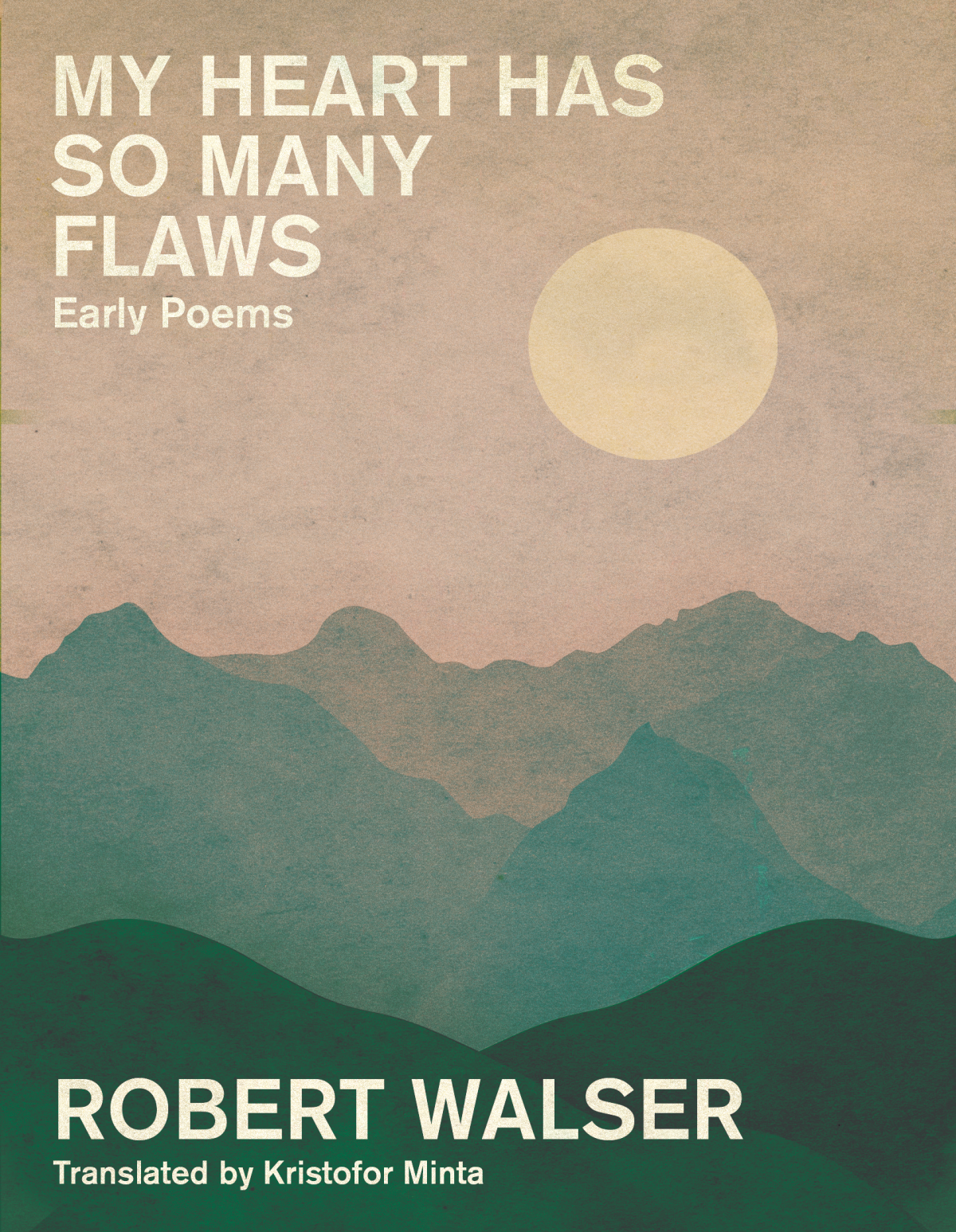
My Heart Has So Many Flaws
It is well after dark, and the full moon sparkles across the snow. Smoke rises lazily from far-off chimneys. The trees are silent, asleep. In fact, the whole world is asleep—all except for Robert Walser.
In the winter of 1898, just over a decade before the start of the Great War, a 20-year-old Walser meanders through the woods outside his family home in Biel, Switzerland. Adrift in ecstasy, he pauses on his long walk to scribble in his notebook: “Only one thing transcends time, / and that is longing.” Just moments before, the soon-to-be writer had laid eyes on two attractive girls.
“Oh, like roses, / both girls / threw glances my way,” he writes. “Had the world turned red / or did I blush?” Perhaps for the first time in his life, Walser confesses his most vulnerable self on the page: “A burning whisper / shivered around me.”
In these quiet years before Walser entered the world as an adult—before his attempt at acting, his first published poem, and his service in the Swiss military—he was a boy with an aching heart, a fascination with the mundane, and an adoration for the possibility of language to express both experiences. As a result, his most memorable writing is musical; at his strongest, it’s evanescent. W.G. Sebald once wrote that Walser’s later writing “has the tendency to dissolve upon reading … a tendency to vanish into thin air.”
In My Heart Has So Many Flaws (Sublunary Editions, 2024), translator Kristofor Minta gathers all known poems that Robert Walser, the German-speaking Swiss writer, had written before the Great War, including two full manuscripts (Heartstring and Longing [c.1900] and Poems [1909]), a handful of selections from the relevant period, as well as a single poem—intended as a coda—written after the war. Paying careful attention to the spirit and tone of the original Swiss German, Minta offers an unprecedented view of both a pre-war Walser and a pre-war Europe.
Though Walser’s later fiction is considered foundationally important to literary modernism, leaving an indelible mark on writers ranging from Franz Kafka and Hermann Hesse to Walter Benjamin, a concentrated view of his early writings helps make sense of the thing that post-war Walser, along with the rest of Europe, so desperately mourned, namely, “the unkillable nature of hope,” as Minta writes in his afterword. Minta suggests that Walser’s early work epitomizes Kant’s idea of Bewunderung or “astonishment which does not cease when the novelty wears off.”
While much scholarship has focused on Walser’s veiled autobiographical writing, his fragmentary prose and meticulous deconstruction of the self—all characteristically modernist projects—Minta traces these qualities back to their beginnings, in order to reveal a Walser who diligently mastered the rules so that he may later break them. Where the post-war Walser is a mere “simulacrum devised when he had a growing reading public,” the youthful, pre-war Walser is wide-eyed, eager, and blossoming: “Every morning I hearken, I eavesdrop / on the green riddle of its domain,” Walser writes in “Of the Forest.”
At every turn, his meanderings into the wilderness of his childhood home are accompanied by experiments with language and color. In “Evening,” Walser plays with adjectives like a child might skip a pocketful of rocks across the surface of a lake, noting how each size and shape interacts with the water: “a vast evening-gray. / The snow is evening-still.” In “Always Onward,” Walser plays with nouns and adverbs to the same effect: “The green of the meadows laughed. / The smoke rose, smokily smiling.” Throughout his poems, Walser investigates the contours of words, feeling their weight in his hands, turning them in the light. Only then can the reader come face to face with a young man whose expectations for the world are about to shatter.
At the end of the collection, Walser’s poem “Spring,” which he wrote in 1919, five years into the Great War, poignantly contrasts the poems that came before. In a tone that is both humbled and jaded, the Walser who was, just pages before, enthusiastic about life and love is now painfully aware of their fragility.
“It probably suits everyone that it’s / warm again,” he writes. “That the windows are open / and spring breezes blow through the room.” He goes on, “Oh, / everything is so delicate, / far too fragile to last.”
Though this post-war Walser still diligently attends to the beauty of nature, to the birds singing in the trees and to the “triumphant sea of flowers,” his writing has sobered. As if his innocence momentarily vanished.
This shift in his style and tone transpired over more than a single poem. It took years of working as a clerk, an apprentice, an assistant, and a butler and, later, spending time as an in-patient at mental institutions for the young Walser of 1898 to transform—and, in many ways, harden—into the Walser we know today. However, if there is one thing this collection of early work clarifies, it is that Walser was optimistic to the end.
Just as he wrote in 1909, “I’ll plunge into the fray. / Like so many others, I want / to help lift the world out of misery,” he repeated ten years later, as if to remind himself, that “It’s difficult / to see all that splendor / and not be moved. […] Only those / who truly love succeed in song.”
While Walser made clear many times throughout his career, the heart is a fragile thing that chips and shatters and becomes deformed, as life wares on. Yet love, far above and beyond it, endures. For both the young and the older Walser, love was the key to triumphing over tragedy.
My Heart Has So Many Flaws is available from Sublunary Editions.